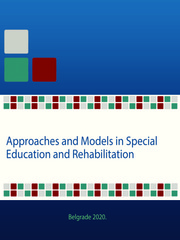Приказ основних података о документу
Application of training technology programs and dosed, planned, physical activities for cardiovascular patients with implanted coronary stents
| dc.contributor | Nedović G. | |
| dc.contributor | Eminović F. | |
| dc.creator | Drašković, Malin | |
| dc.creator | Drašković, Vesko | |
| dc.creator | Balević, Milijana | |
| dc.date.accessioned | 2021-10-06T13:09:53Z | |
| dc.date.available | 2021-10-06T13:09:53Z | |
| dc.date.issued | 2020 | |
| dc.identifier.isbn | 978-86-6203-139-6 | |
| dc.identifier.uri | http://rfasper.fasper.bg.ac.rs/handle/123456789/3524 | |
| dc.description.abstract | Training technology, as a method of choice in post-operative therapy of patients with implanted coronary stents, has given results, primarily due to the non-invasive nature of the therapy Humans, as kinetically dependent beings, are familiar with the nature of movement Professional guidance and planned procedures use the nature of human motoric values in order to full recovery. The individual physiological characteristics of all patients are also crucial. Subjective analyzes contributed to the objective values of each patient. Hypokinetic syndrome was a common feature in all patients, which implies that as the main etiological factor of cardiovascular diseases, it must be the focus of attention in the therapeutic part of the treatment. Dosed exercises, professionally monitored, aim to initiate the physiological norms of the organism. By initiating physiological processes and encouraging the creation of an adequate oligo-structure, the organism, as a functional and complete unit, is given space for self-healing, to achieve the oligostructure focuses on the location that is deficient in the human body. The cardio part of the therapeutic program is based on natural movement for these reasons. The movements that patients are exposed to, while working on a treadmill or static exercise machine, such as a bicycle, simulate natural, innate and non-invasive movement. In the aerobic part, which includes shaping exercises, continuous and dosed contraction of smaller muscle groups is stimulated. Their activation stimulates an oligo-structure that contributes to adequate systemic reperfusion. The individual sensations that patients feel in the very process of training technologies give room for the detection of secondary problems that are not related to the cardiovascular system. The observed problem with the cervical spine, endocrinological problems, as well as pathological phenomena in the locomotor system, contribute to the confirmation of the thesis that the organism must be treated as a whole structure. Functionally in both of physiological and pathological processes, by opening the cardboard - physiological diary, precise anamnesis, adequate medical documentation and concise monitoring of the patient, an error in the assessment of physical status is prevented and a clear physiological picture of the patient’s status is obtained. Pedagogically and psychologically acceptable approach, the therapist towards the patient contributes to the adequate assessment of all parameters included in the analysis and prevents the impact of anxiety in patients on the goal of therapy. Cardiovascular patients do not have basic medical knowledge, but are informed about the essential function of the heart muscle in existence. When all the parameters in the approach to the patient, work with the patient and thorough monitoring of the obtained data are respected, the therapeutic application of treatment technologies gives concrete results. | sr |
| dc.language.iso | en | sr |
| dc.publisher | University of Belgrade – Faculty of Special Education and Rehabilitation Publishing Center of the Faculty | sr |
| dc.rights | openAccess | sr |
| dc.rights.uri | https://creativecommons.org/licenses/by-sa/4.0/ | |
| dc.source | Approaches and Models in Special Education and Rehabilitation – Thematic Collection of International Importance | sr |
| dc.subject | training technologies | sr |
| dc.subject | cardiovascular patients | sr |
| dc.subject | dosed exercises | sr |
| dc.subject | hypokinetic syndrome | sr |
| dc.subject | coronary stents | sr |
| dc.title | Application of training technology programs and dosed, planned, physical activities for cardiovascular patients with implanted coronary stents | sr |
| dc.type | conferenceObject | sr |
| dc.rights.license | BY-SA | sr |
| dc.citation.epage | 145 | |
| dc.citation.spage | 135 | |
| dc.identifier.fulltext | http://rfasper.fasper.bg.ac.rs/bitstream/id/3308/bitstream_3308.pdf | |
| dc.identifier.rcub | https://hdl.handle.net/21.15107/rcub_rfasper_3524 | |
| dc.type.version | publishedVersion | sr |


